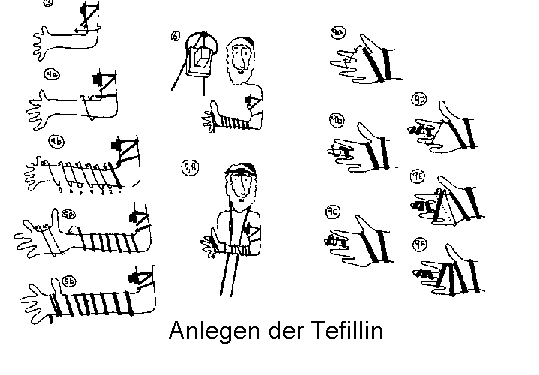Ever wonder why...we wrap the Tefillin strap seven times?
Ever wonder why...we wind the tefillin strap seven times?
When Jewish men
put on tefillin in the morning, why is the tefillin strap wrapped
around the left arm exactly seven times? Almost every observance
we perform in Jewish life is full of deep symbolism. Wearing tefillin
is no exception. Almost every aspect of tefillin has a metaphoric or
kabalistic aspect connected to it. The reason we wrap our tefillin
seven times around our arm is because each winding corresponds to the
seven words of the following pasuk: “Poteach et yadecha
umasbia lechol chai ratzon”, “You open Your hand and satisfy the desire
of every living thing.” As we wrap our arm, we ask God to open His, so
to speak, and provide sustenance for all He has created.
The custom and manner in which we wrap the strap on
the hand is also replete with profound symbolism. It’s wound three
times around the middle finger to form a ring. Indeed, when these
windings are made each morning, the verse “[The Jews] will be betrothed
to Me forever” (Hoshea 2:21) is said. This verse says the phrase
“betrothed to Me forever” three times, therefore the three windings.
The windings also form the three Hebrew letters Shin, Daled and Yud.
These letters spell the name of God, Sha-dai. This name is also spelled
out on the tefillin shel rosh, which is worn on the head, along with
the knot of the tefillin shel yad, which is the tefillin worn on the
arm. The Shin is shaped on the box itself, the Daled is found on the
knot of the tefillin shel rosh and the Yud is found on the tefillin
shel yad.
Rabbi Shamshon Raphael Hirsch explains the
symbolism in having the name Sha-dai on our tefillin. The head and the
hand represent, respectively, the dedication of the mind and actions of
the body. Every phase of our life should be placed in the service of
God. Just as God appeared to Avraham and said, “I am God, Sha-dai, walk
in front of me and be pure”, so too, is this the mission of Avraham’s
descendants.
The Medrash tells us that the pasuk in Tehillim
(91:7) which reads: “A thousand shall fall at your at your left
side, ten thousand at your right, but it shall not reach you.” is
referring to the mitzvah of tefillin. Through the mitzvah of tefillin
one is guarded from evil by a thousand angels. May we merit that this
pasuk and its reward truly encompass us as we fulfill the mitzvah of
tefillin.
Rabbi Eliezer Kessler
Houston, Texas
|
